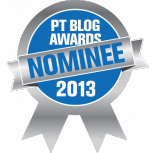 The mechanisms of exercise physiology have been described in great detail over the past 30 years. The sports medicine and sports sciences research is growing in leaps and bounds. So why is it that with all the “advances” in the science, athletes continue to sustain training-related injuries at an alarming rate?
The mechanisms of exercise physiology have been described in great detail over the past 30 years. The sports medicine and sports sciences research is growing in leaps and bounds. So why is it that with all the “advances” in the science, athletes continue to sustain training-related injuries at an alarming rate?
Is it because coaches continue to advocate traditional training approaches based on old research or anecdote? Or is it because very few attempts have been made to synthesize and integrate it into a unified “big picture” approach to human performance? In a system such as the human body, how could there be so much disparity between approaches to training? Why has so much attention been given to “genetics” and so little to “consistent training principles”?
After many years of reviewing the sports sciences and sports medicine research, I began integrating the research into a more unified approach. This started with a focus on the running and cycling literature. But it also expanded to some reading on systems thinking and chaos theory, fields of study far removed from the sports sciences realm.
By 1999, I had synthesized many diverse avenues of thought into what I have termed “Recovery-Centered Training”, a new model of human performance.
What Is Recovery-Centered Training (RCT)? RCT is a model for human performance based on the mechanisms of tissue recovery, adaptation, and development. It’s goal is to understand the behavior of the “system” (the total athlete), the mechanisms underlying the processes, and the strategies to address these mechanisms optimally to build the capacity of the athlete. It serves as a functional basis for injury prevention-based training. A schematic overview can be found below.
 Why Develop A New Model For Human Performance? Most coaches and clinicians are concerned with the training sessions. But the training is only a small part of the equation. The other important and oftentimes forgotten component is the athlete’s ability to recover from and adapt to those workouts.
Why Develop A New Model For Human Performance? Most coaches and clinicians are concerned with the training sessions. But the training is only a small part of the equation. The other important and oftentimes forgotten component is the athlete’s ability to recover from and adapt to those workouts.
What Are The Functional Elements Of RCT? The human body has one primary goal: to maintain homeostasis. This is accomplished via synthesis or lysis of tissues, and facilitation or inhibition of systems. There are two primary functional elements of Recovery-Centered Training. These are the mechanical and cognitive “networks”. The mechanical network includes all of the tissues and systems, especially the neuro-musculo-skeletal and cardiovascular systems. The cognitive network is composed of the central nervous system, the endocrine system, and the immune system – all of which have a direct impact on the body’s ability to adapt to the imposed demands of the environment.
What Are Loading Strategies? Both the mechanical and cognitive networks can be manipulated by various training stimuli or “loading strategies”. These are, in effect, strategies by which we can apply the necessary loading and stresses to the mechanical and cognitive networks. An optimal training response requires the necessary loading strategy with the necessary critical parameters (the dosage and frequency) along with a time period, or delay, required to adapt to the loading strategy.
Responses to loading strategies can be cognitive, mechanical, symptomatic, and functional in nature.
Summary: Recovery-Centered Training is a new model for human performance. It incorporates the key mechanisms of mechanical, cognitive, and nutritional loading into a cohesive platform for all sports and clinical approaches.
The next three articles will address the various loading strategies - mechanical, cognitive, and nutritional – that are required in an optimal approach to training, and how to implement them.
Photo credits: Wikipedia; RCT image from RunSmart:A Comprehensive Approach To Injury-Free Running

 "Running Injuries: Etiology And Recovery- Based Treatment" (co-author Bridget Clark, PT) appears in the third edition and fourth editions of "Clinical Orthopaedic Rehabilitation: A Team Approach" by Charles Giangarra, MD and Robert C. Manske, PT.
"Running Injuries: Etiology And Recovery- Based Treatment" (co-author Bridget Clark, PT) appears in the third edition and fourth editions of "Clinical Orthopaedic Rehabilitation: A Team Approach" by Charles Giangarra, MD and Robert C. Manske, PT.
 Allan Besselink, PT, DPT, Ph.D., Dip.MDT has a unique voice in the world of sports, education, and health care. Read more about Allan here.
Allan Besselink, PT, DPT, Ph.D., Dip.MDT has a unique voice in the world of sports, education, and health care. Read more about Allan here.
 Top 5 finalist in three categories: "Best Overall Blog", "Best PT Blog" and "Best Advocacy Blog".
Top 5 finalist in three categories: "Best Overall Blog", "Best PT Blog" and "Best Advocacy Blog".